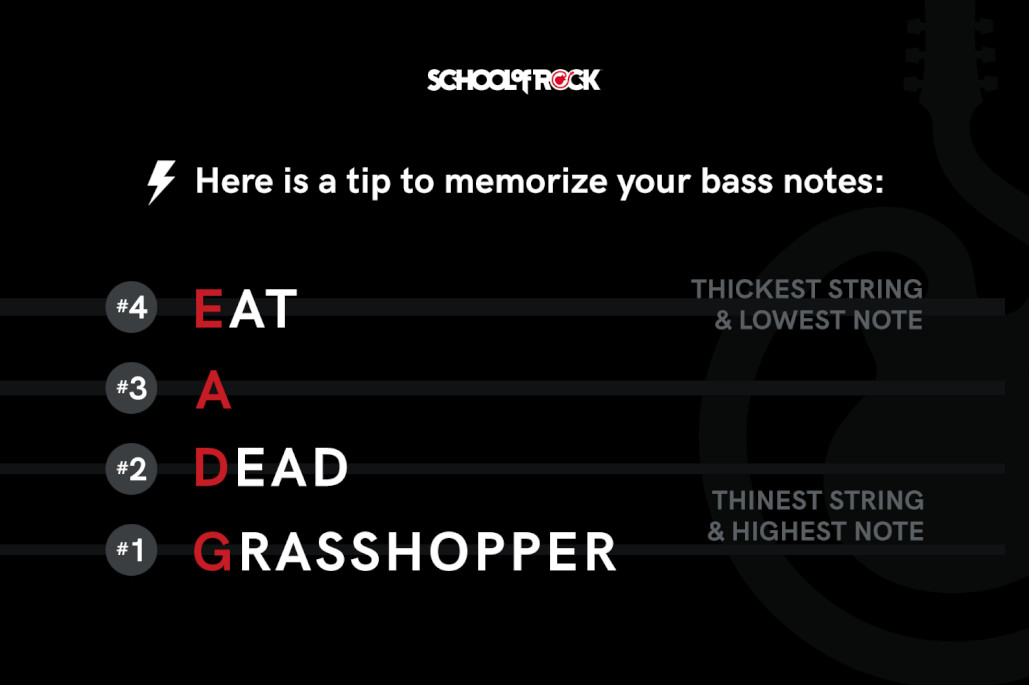Learning bass guitar is an exciting journey, and mastering Bass Guitar Standard Tuning is one of the very first and most crucial steps. An out-of-tune bass guitar simply won’t sound right, no matter how skilled you become. Proper tuning is not just about sounding good; it makes practicing enjoyable and rewarding, especially when you’re jamming with other musicians. Luckily, tuning your bass and keeping it in tune has never been easier with modern tools and techniques.
Understanding Bass Guitar Tuning Basics
Before diving into the methods, let’s familiarize ourselves with the fundamental components involved in tuning. The tuning pegs, located on the headstock of your bass guitar, are the key to adjusting pitch. By turning these pegs, you manipulate the tension of the strings. Tightening a tuning peg increases string tension, resulting in a higher pitch, while loosening it decreases tension and lowers the pitch.
How Often Should You Tune Your Bass?
A good rule of thumb is to tune your bass guitar every single time you pick it up to play. While basses generally hold their tuning better than standard guitars due to heavier gauge strings, they are still susceptible to going out of tune. Factors like temperature changes, humidity, and even the act of playing itself can subtly alter string tension.
If your bass sounds slightly off while practicing, or if it clashes with recordings you’re playing along to, it’s a clear indicator that you need to check and adjust your standard tuning for bass guitar. Regular tuning ensures you develop an accurate ear and maximizes your practice sessions.
 Close up of tuning pegs on a bass guitar headstock
Close up of tuning pegs on a bass guitar headstock
Methods for Tuning Your Bass Guitar
There are primarily two main approaches to tuning a bass guitar, each with its own advantages:
- Tuning by Ear using a Reference Note: This traditional method involves using a “reference note” from a reliable source, such as another instrument known to be in tune (like a piano), a tuning fork, or a pitch pipe. You then adjust your bass strings to match this reference pitch by ear.
- Utilizing an Electronic or Clip-on Tuner: Modern technology offers highly accurate and convenient electronic tuners. Clip-on tuners, in particular, have revolutionized tuning by attaching directly to the bass headstock and sensing string vibrations.
Tuning with a Clip-On Electronic Tuner: Accuracy and Convenience
Clip-on tuners are incredibly user-friendly and have become a staple for bass players of all levels. Unlike older electronic tuners that required plugging in, clip-on tuners are battery-powered and discreet. They detect string vibrations directly from the headstock, indicating whether your bass guitar notes are “flat” (too low), “sharp” (too high), or perfectly in tune.
When selecting a clip-on tuner, especially for bass, ensure it’s capable of accurately registering the low E string, the lowest note on a standard 4-string bass. These tuners are affordable, easy to operate, and provide reliable accuracy. Many modern practice amplifiers also incorporate built-in tuners for added convenience.
Tuning Your Bass Guitar Without a Pitch Tuner: Alternative Methods
Even without a dedicated tuner, you have several options for achieving accurate bass guitar tuning:
Smartphone Tuner Apps: Tuning at Your Fingertips
The app store on your smartphone is a treasure trove of tuner apps, many of which are available for free. These apps utilize your device’s built-in microphone to analyze the pitch of your strings. As you adjust the tuning pegs, the app’s display provides real-time feedback, guiding you until each string is perfectly in tune. This is a readily accessible and effective method for most bassists.
Using Another Instrument as a Reference Pitch: Developing Your Ear
Tuning your bass guitar using a reference pitch from another instrument, such as a piano or keyboard that you know is correctly tuned, is a valuable skill that develops your ear training. This method requires you to tune one of your bass strings to match the reference pitch solely by ear.
The process involves listening intently to the reference pitch, playing the corresponding note on your bass, and carefully comparing the two pitches. Make subtle adjustments to your bass string’s tuning peg until your bass note precisely matches the reference pitch. Once you have one string accurately tuned, you can tune the remaining strings to each other. This is achieved by fretting a note on a lower string and then tuning the next open string to match that fretted note. This technique, often referred to as tuning “by ear” or using intervals, is a fundamental skill for any musician.
Exploring Bass Guitar Tunings: Standard and Beyond
Standard Bass Guitar Tuning: The Foundation
For a standard 4-string bass guitar, the standard bass guitar tuning is E, A, D, and G. This tuning is the same as the four lowest-pitched strings on a standard 6-string guitar, but tuned one octave lower, giving the bass its characteristic deep sound. The intervals between these strings are tuned in perfect fourths.
 Diagram showing standard bass guitar tuning notes E, A, D, and G on the fretboard
Diagram showing standard bass guitar tuning notes E, A, D, and G on the fretboard
Standard tuning is the most versatile and widely used tuning for bass guitar. It provides a solid foundation for playing various genres and styles of music. It’s also the tuning that most beginner bass lessons and learning materials are based upon, making it essential to master first.
To help remember the standard bass notes, you can use mnemonics like “Eat Apples Daily, Grandpa” or “Elephants And Donkeys Grow.”
 Mnemonic phrase to remember standard bass tuning: Eat A Dead Grasshopper
Mnemonic phrase to remember standard bass tuning: Eat A Dead Grasshopper
5-String and 6-String Bass Guitar Tunings: Expanding Your Range
As you progress, you might encounter bass guitars with more than four strings. 5-string basses are increasingly popular, offering an extended lower range. The most common 5-string bass tuning adds a low B string below the E string, resulting in B, E, A, D, G. Some 5-string basses are tuned with a high C string instead, E, A, D, G, C, but the low B configuration is far more prevalent, especially in genres like metal, rock, and funk, where the extended low end is highly valued.
For bassists seeking even greater tonal range, 6-string bass guitars expand further by incorporating both a low B string and a high C string. The standard 6-string bass tuning is B, E, A, D, G, C, offering the widest sonic palette.
Drop D Tuning for Bass Guitars: Adding Depth
Drop tunings offer a simple yet effective way to create a heavier, deeper sound without adding extra strings. Popularized in the 1990s, especially in heavier music genres, drop tuning involves lowering the pitch of your lowest string, typically by a whole step.
Understanding Drop D Tuning
Drop D tuning is achieved by tuning the E string down a whole step to D. This results in a tuning of D, A, D, G. The D string becomes a perfect fifth below the A string, creating a richer, more resonant low end. Drop D is widely used in rock, metal, and alternative music for its heavier sound and the ability to play power chords with a single finger on the lower strings.
Exploring Lower Drop Tunings
The concept of drop tuning can be extended further. Metal bands often utilize even lower tunings, such as Drop C (C, G, C, F) and Drop B (B, F#, B, E), to achieve extremely heavy and aggressive tones.
Drop D Tuners: On-the-Fly Tuning Changes
For situations requiring frequent switching between standard tuning and drop tunings, Drop D tuners are invaluable. These specialized tuning mechanisms allow you to instantly drop your E string to D and back to E with the flick of a lever, without needing to use a tuner. This is particularly useful in live performance settings.
Tips to Maintain Your Bass Guitar Tuning
Once your bass is perfectly in tune, implementing these practices will help it stay in tune for longer:
- Regular String Changes and Stretching: Bass strings, while more durable than guitar strings, do lose their vibrancy and tuning stability over time. Change your bass strings when they begin to sound dull or become difficult to keep in tune. When installing new strings, stretch them properly. Gently pull on each string along its length, being careful not to pull too hard and break them. Stretching helps to seat the strings and reduces initial stretching after tuning. For players who play frequently and prefer a bright tone, monthly string changes might be desired. However, most bassists find that bass strings last for several months under normal playing conditions.
- Keep Your Bass Strings Clean: Dirt, oils, and sweat from your hands can accumulate on your bass strings, contributing to corrosion and dulling the tone, which can also affect tuning stability. Wash your hands before playing and wipe down your strings with a clean cloth after each playing session to prolong their life and maintain optimal tone and tuning.
- Proper Bass Guitar Storage: Protecting your bass guitar from environmental fluctuations is crucial for maintaining tuning stability and overall instrument health. When not in use, store your bass in its case or gig bag to shield it from dust, humidity changes, and temperature swings. Avoid exposing your bass to extreme temperature variations or direct sunlight, as these can cause the wood to expand or contract, affecting tuning and potentially causing damage to the instrument.
By consistently tuning your bass and following these maintenance tips, whether you use an electronic tuner or tune by ear, you’ll ensure your instrument sounds its best, stays in tune longer, and provides a much more enjoyable playing experience.
Ready to Rock? Take Your Bass Playing Further with Lessons
Now that you’ve mastered the essentials of bass guitar standard tuning, you’re ready to embark on the exciting journey of learning to play bass lines and grooves! School of Rock offers a comprehensive range of bass lessons designed for all skill levels, from absolute beginners to advanced players. Our expert instructors provide personalized guidance and a fun, engaging learning environment. Discover your inner bassist and unlock your musical potential with School of Rock today!
